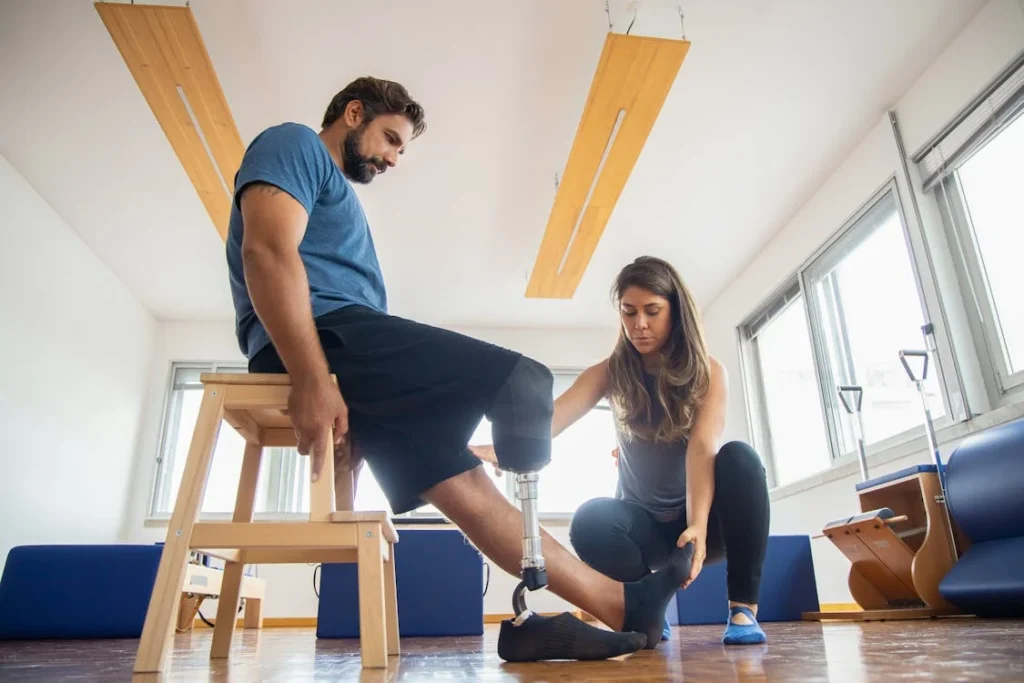Rehabilitation is a vital part of recovery after limb loss, stroke, injury, or surgery. But for many patients in India, therapy is often delayed, cut short, or skipped entirely—not because they don’t want to heal, but because consistent access to rehab is expensive, time-consuming, or simply unavailable in their area. Many can’t afford regular clinic visits. Others live too far from physiotherapy centers. And in smaller towns or rural communities, there may not be a trained therapist for miles.
So what if we could bring therapy home? What if we could make it feel engaging, motivating, and—most importantly—affordable?
That’s where low-cost gamified rehab comes in.
At Robobionics, we’ve spent years building prosthetics that restore mobility. But recovery doesn’t end with fitting a device. It begins there. Without the right kind of rehab, even the best prosthetics can’t help a person fully regain control, strength, and confidence. And we’ve seen firsthand that when therapy becomes fun, flexible, and affordable—people do it more often. They heal faster. They believe in the process.
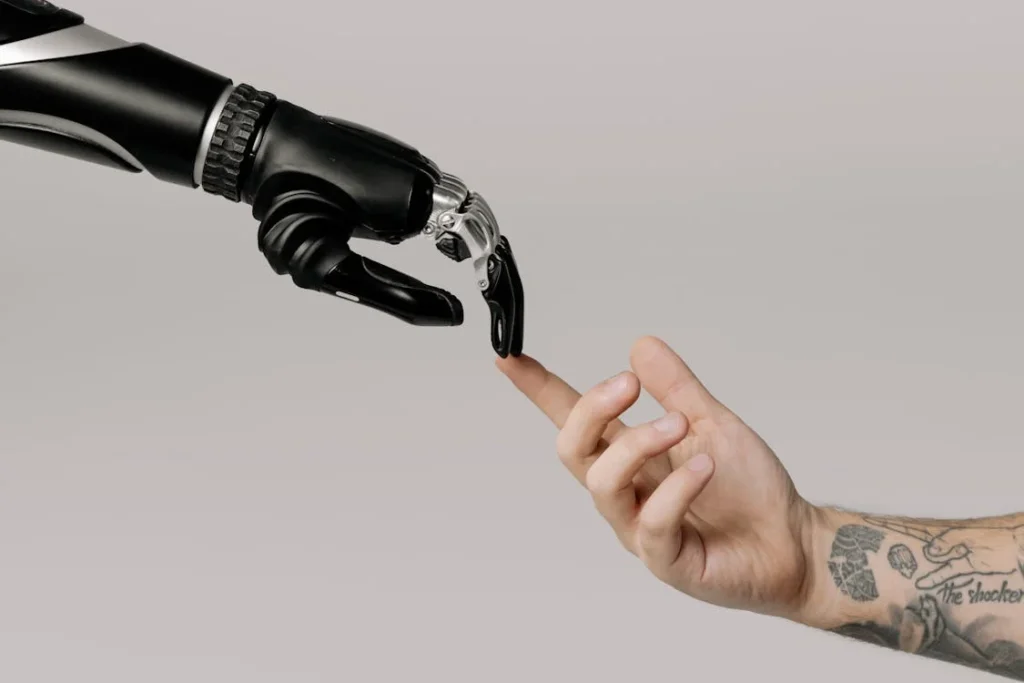
The Case for Affordable Gamified Rehab in India
Why Traditional Rehab Alone Isn’t Reaching Everyone
In most Indian cities, people who need physical rehabilitation have access to hospitals, physiotherapy clinics, or private therapists. But outside of these urban areas, the situation looks very different. In villages and small towns, rehab infrastructure is often minimal. Therapists are few. Travel distances are long. And for many families, repeated clinic visits cost more than just time—they cost lost wages, transport, and energy that they simply cannot spare.
Even in cities, therapy can become unaffordable quickly. A standard physio session may cost ₹300 to ₹700. If a patient needs therapy three times a week for six months, that becomes a serious financial burden for most households. As a result, therapy is started but often dropped halfway. Some never begin at all.
This is where low-cost gamified rehab offers something practical: it brings therapy to the patient instead of asking the patient to go to therapy. It provides structure, repetition, and progress tracking—all from a simple device they can use at home. And most importantly, it allows that therapy to be consistent. Not once a week. Not when transport is available. But every single day, in a familiar, safe space.
What Makes Gamified Rehab “Low-Cost”—and Still Effective
There’s a common misunderstanding that gamified rehab needs expensive equipment: VR goggles, motion-capture suits, or high-end sensors. That might be true in some Western models. But in India, innovation means building smarter—not just fancier.
Some of the most promising gamified rehab tools being developed or tested in India work with basic smartphones, tablets, or low-end laptops—devices already found in many households. Instead of relying on high-resolution tracking cameras, they use the phone’s existing camera or motion sensors to detect movement. Instead of complex visuals, they rely on simple, intuitive games with minimal data usage and offline functionality.
At Robobionics, we’ve worked with developers who’ve created platforms that run on as little as 1GB of RAM, require no constant internet connection, and work well in low-light environments. They use familiar visuals—local characters, rural scenery, or traditional music—which makes the experience friendly, not foreign.
These systems may not have the flashy polish of imported digital therapy platforms, but they do what matters most: they guide the patient, reward effort, measure improvement, and make therapy enjoyable. And they do it in a way that fits within real-world Indian homes.
Rehab for ₹1,000 a Month? It’s Already Happening
In pilot programs across India, several hospitals and NGOs have tested home-based gamified rehab kits designed to cost less than ₹1,000 a month. That includes access to a tablet-based system (either provided or shared within a village group), a basic sensor band that fits on the arm or leg, and a suite of games tailored for different rehab goals—upper limb movement, balance training, grip strength, gait control.
Once a patient is onboarded, the system guides them through daily routines. No physiotherapist needs to be present for each session, though therapists can check in weekly via phone or video call. The app tracks every session, logs performance, and shows the patient how they’re improving.
Most importantly, patients don’t see this as “medical tech.” They see it as something they can control. That sense of ownership is powerful. It transforms recovery from a burden into a choice.
For example, in a rehab center in Nashik, patients recovering from stroke are using such low-cost tools to regain mobility without needing to leave home every day. In Chennai, children with cerebral palsy are using tablet games to practice hand-eye coordination. And in Delhi, a prosthetic user who once gave up on therapy now practices for 20 minutes every morning—because the app makes it feel like a game, not a struggle.
The question is no longer can low-cost gamified rehab work? The question is how fast can we scale it?
The Psychology of Consistency: Why Games Work When Therapy Doesn’t
Let’s be honest. No matter how important rehab is, patients—especially at home—often skip it. The reasons are not always physical. Often, it’s mental. Traditional home therapy routines are boring. They lack feedback. They feel like chores. And when people feel alone, unmotivated, or unsure if they’re making progress, they give up.
Gamified rehab fixes this by making therapy more like a dialogue than a checklist.
Instead of saying “do this ten times,” the game says, “can you beat your score today?” Instead of silence, it gives sound. Instead of guessing, it gives feedback. That interactivity pulls the user in. It turns repetition into challenge. It makes the same movement feel like something worth doing again.
This is especially important for patients who don’t have a therapist standing beside them every day. The game becomes the guide. And when that guide is simple, responsive, and positive—it builds routine. Routine builds results.
At Robobionics, we’ve watched patients who never finished their rehab in the clinic become regular users of digital recovery systems—just because they feel engaged. That’s the power of using psychology, not just prescriptions, to drive healing.
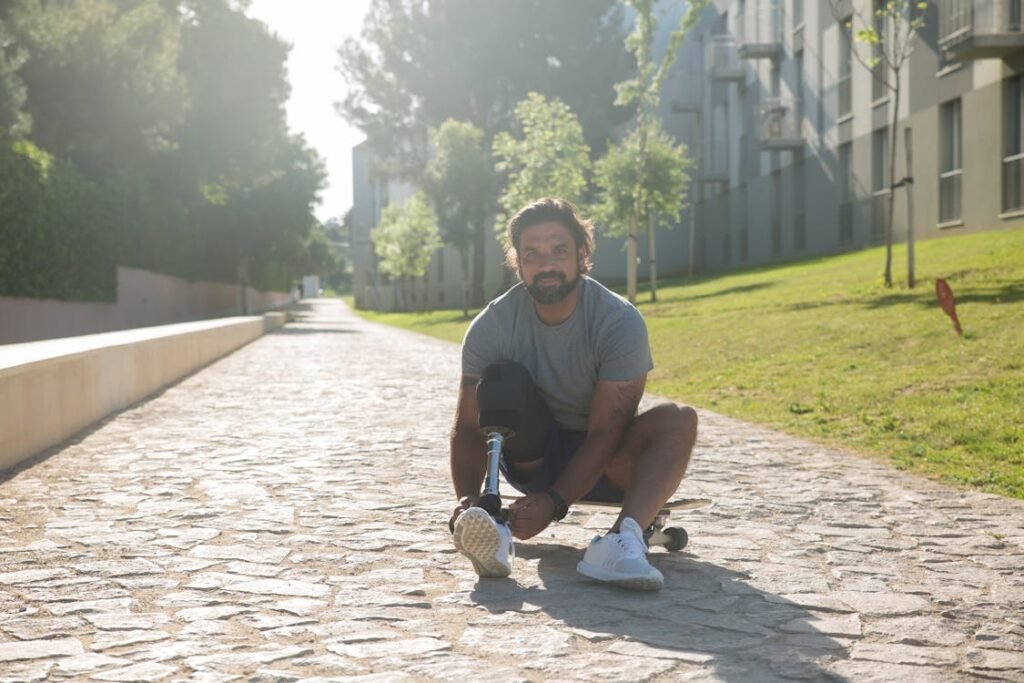
Designing for India: Making Gamified Rehab Culturally and Technically Fit
What Works in the West Doesn’t Always Work Here
Many gamified rehab systems that exist today were designed for markets in Europe or the U.S.—places with near-universal broadband, large living spaces, and high-end hospital infrastructure. In India, the reality is very different. Internet connectivity can be unstable. Living rooms double as bedrooms. Devices are shared among family members. And many patients, especially seniors, may never have used a tablet before.
So designing for India isn’t just about lowering the cost. It’s about rethinking the entire experience to fit people’s lives as they really are.
One of the biggest lessons we’ve learned at Robobionics is that the success of a gamified rehab tool doesn’t depend on how advanced it looks. It depends on whether the user feels comfortable using it. That means simple menus, clear icons, voice guidance in local languages, and instructions that don’t feel rushed or technical.
In states like Bihar or Odisha, for instance, rehab apps that speak in Hindi or Odia and use animated characters that resemble local culture are seeing better uptake than English-language platforms with generic voices. When patients hear familiar accents and see visual themes they recognize, their comfort increases. The tool feels like theirs.
Offline Functionality Isn’t Optional—It’s Essential
In many rural and even semi-urban areas, expecting patients to have a stable internet connection is unrealistic. Gamified rehab systems must be able to work offline, store data locally, and sync only when a connection becomes available. This not only reduces costs for the user but also ensures that their therapy isn’t interrupted just because the signal dropped.
Some of the most promising low-cost rehab apps now operate in a hybrid mode. They update games or exercises when connected, but allow daily sessions to run without any data. Progress is stored in a lightweight file that syncs when Wi-Fi or mobile data becomes available. This makes the system dependable. And dependability builds trust.
Hospitals partnering with outreach programs in Madhya Pradesh and Jharkhand have reported better rehab completion rates when offline functionality is built in—especially among older patients who feel overwhelmed by constant app updates or streaming requirements.
Designing for Shared Devices and Small Screens
In a country where smartphones are shared among family members and screen time is often limited, gamified rehab tools must adapt. That means sessions that can be paused and resumed, data that is password-protected, and apps that run well even on older Android devices.
Some platforms now offer a “guest mode” where users can quickly access a session without needing to navigate a full app environment. This is especially helpful for senior citizens or people with limited digital skills. Instead of logging in, they just tap once, start moving, and get feedback instantly.
For visual design, large text, minimal distractions, and single-action screens work better than complex layouts. At Robobionics, we’ve tested designs with prosthetic users in their 60s who’d never touched a screen before. Their feedback was consistent: make it big, make it clear, and keep the screen focused on one thing at a time.
This kind of user-first design thinking is what transforms a low-cost tool into a high-impact one.
Support Doesn’t Have to Be Digital—Community Matters
Even with the smartest rehab app, many users still need encouragement. In India, that encouragement often comes from community health workers, local clinics, or family members. That’s why truly successful gamified rehab systems don’t just rely on the screen—they tap into people power.
Some low-cost rehab pilots now train ASHA workers and local physiotherapists to become facilitators. They check on patients weekly, troubleshoot problems, and even help organize group rehab sessions where people play the games together. In Kerala and parts of Karnataka, this model has made gamified therapy feel less lonely, more social—and ultimately more effective.
In joint families, involving grandchildren or younger relatives as “coaches” has also worked well. Children help elders navigate the app, celebrate small wins, and reinforce daily habits. One user told us, “My grandson doesn’t let me miss my therapy. He says, ‘Dadu, your game is waiting.’”
That kind of support can’t be coded into an app. But designing systems that invite community involvement is a smart and distinctly Indian strategy.
Price Isn’t the Only Barrier—Trust Is
Even when rehab systems are affordable, people need to believe they work. Many patients hesitate because they’re unsure if “playing a game” can actually heal them. That skepticism is understandable. Medical care has always felt serious—and when recovery suddenly involves sound effects and animation, it may seem silly.
This is why education is just as important as design. When doctors, therapists, or hospitals recommend gamified rehab as a prescription—not a gimmick—patients take it seriously. When people see their neighbor using it and improving, they begin to believe. When trusted organizations explain how and why it helps, that belief turns into action.
At Robobionics, we’ve seen this transformation many times. A hesitant patient tries it once, sees a small win, and starts asking for the next level. Their body moves more. Their confidence grows. And the “game” becomes part of their recovery ritual.
Low-cost gamified rehab isn’t just about removing the price tag. It’s about building tools that feel natural, useful, and worth showing up for.
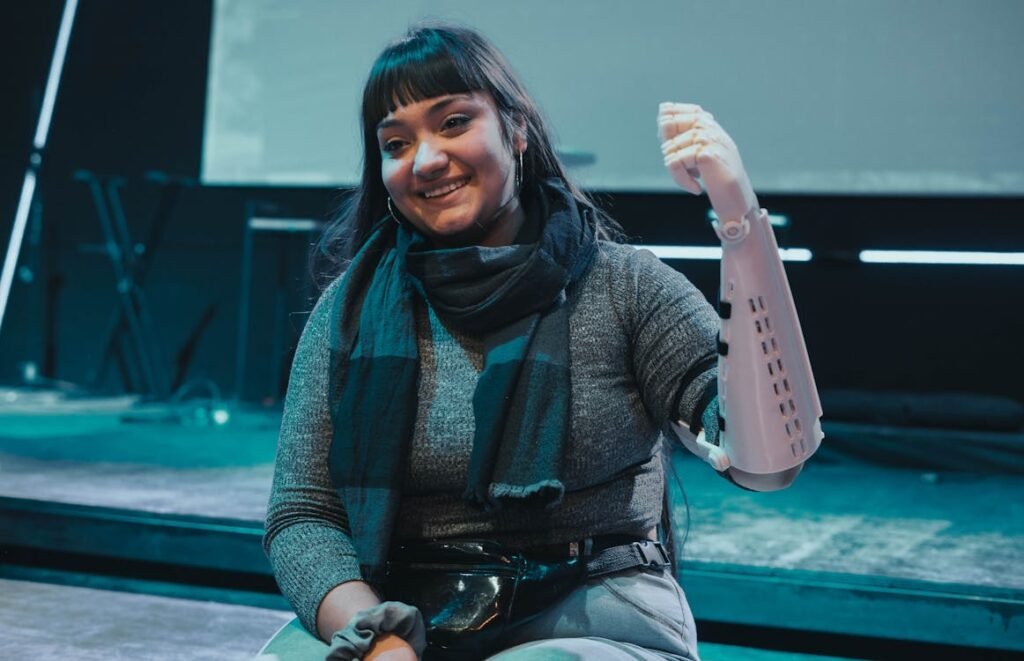
Scaling the Vision: What’s Needed to Bring Low-Cost Gamified Rehab to Millions
Public Healthcare and Government Buy-In
If gamified rehab is going to reach every district, every panchayat, and every doorstep where it’s needed, it has to move beyond pilot projects and into policy. That means including it in public healthcare programs—not as a luxury, but as a necessary part of recovery for limb loss, stroke, fractures, and neuromuscular conditions.
Today, India’s healthcare system is beginning to embrace technology. Initiatives like Ayushman Bharat and digital health missions show that the government is ready to invest in smarter, scalable solutions. Low-cost gamified rehab fits perfectly into this vision. It doesn’t require new buildings, it doesn’t rely on dense staffing, and it runs on devices that already exist in many homes or clinics.
What’s needed now is recognition—by state health departments, AIIMS branches, and district medical officers—that gamified recovery is more than entertainment. It’s therapy with structure, measurement, and momentum.
At Robobionics, we’re working to demonstrate how even a ₹10,000 investment in a basic kit can support hundreds of sessions across a year, reduce therapy dropout, and ultimately cut down the long-term healthcare burden from chronic immobility or delayed recovery.
If such systems are included in government-supported rehab plans—especially for rural patients, post-surgical cases, or those with locomotor disabilities—the scale of impact could be huge.
Partnerships with NGOs and Local Clinics
Not every solution has to come from the top. In fact, some of the best deployment models we’ve seen have come from grassroots collaborations.
NGOs that work in disability support, maternal care, or stroke awareness already have field teams, trust, and reach. If they’re equipped with gamified rehab tools, they can act as rehab coordinators—bringing therapy to places traditional systems never reach.
In Jharkhand, one such NGO partnered with a district hospital and began using rehab apps on second-hand smartphones to help patients with post-fracture mobility issues. The results were surprising—not just in physical improvement, but in attitude. Patients started enjoying their exercises. Some even asked to keep the device longer to continue their “training.”
Similarly, in Nagpur, a local physiotherapy clinic began lending out rehab-enabled tablets to patients who couldn’t afford daily travel. Patients returned the devices after a few weeks—but not before building the habit of daily motion. That short-term access made a long-term difference.
If even a few thousand clinics or NGOs adopt this model, the ripple effect across India could change how therapy is accessed and experienced entirely.
Involving Startups and Tech Innovators
India’s strength lies in its innovation—and this movement needs the energy of rehab-tech entrepreneurs who understand both design and dignity. Already, several Indian startups are building simple motion-tracking tools, low-bandwidth therapy apps, and culturally relevant rehab games.
These tools don’t need to mimic expensive Western tech. They need to solve Indian problems.
That might mean using WhatsApp as a notification tool. Or creating rehab games that work on KaiOS feature phones. Or developing smart fabric sensors that can be stitched into clothing worn during recovery.
Tech isn’t just about screens—it’s about creativity. At Robobionics, we believe the next wave of affordable recovery tools won’t come from multinational corporations. They’ll come from a college dorm in Pune, a rehab center in Cochin, or a coding bootcamp in Ahmedabad—where someone sees a patient struggling and decides to build something better.
We need accelerators, investors, and medical institutions to support these ideas. Because behind every ₹200 rehab game is the power to move a limb, lift a spirit, or reclaim a life.
Creating a National Movement Around Motion
Ultimately, making low-cost gamified rehab a reality across India will take more than devices and apps. It will take a mindset shift.
We need to normalize the idea that movement after surgery, amputation, or injury is just as important as medicine. That therapy isn’t optional. That daily motion is a right—not a luxury. And that games, when designed with purpose, can heal.
This means involving schools, primary health centers, television, and social media in spreading awareness. It means showing real patient stories—of men and women, young and old, who used simple rehab games to recover faster and regain their strength.
It means training physiotherapists in every corner of India not to fear gamification—but to use it as a new form of language. One that connects. One that motivates. One that works.
At Robobionics, we’ve always believed that innovation must meet the ground. That technology must bend toward people—not the other way around. Low-cost gamified rehab is a perfect example of that vision. It’s therapy that feels human. It’s movement that fits your life. It’s healing, made practical.

The Role of Caregivers in Low-Cost Gamified Rehab at Home
Healing at Home Isn’t Just About the Patient
In Indian homes, recovery doesn’t happen in isolation. Whether it’s an aging father recovering from a stroke, a child with a congenital limb difference, or a mother healing from orthopedic surgery, there’s always someone nearby—usually a family member—stepping in to help. This cultural closeness can be a powerful tool in home-based therapy, especially when rehab moves into a digital, gamified space.
But here’s the catch: most gamified rehab tools are designed for individual use. They assume the user is self-motivated, tech-savvy, and willing to follow routines alone. That doesn’t always reflect the Indian reality.
Many patients—particularly the elderly or those with limited digital literacy—don’t feel confident using technology on their own. They worry about breaking something, clicking the wrong button, or not doing the exercises “correctly.” Without encouragement or guidance, they may abandon the process altogether.
This is where caregivers come in—not just as helpers, but as enablers of recovery.
From Observers to Participants: Caregivers Become the Bridge
In homes where a rehab app or motion game is introduced, the first step is often training the family, not the patient. When a daughter understands how to set up the system, or a grandson knows how to adjust the camera angle, the patient feels less overwhelmed. They don’t have to navigate alone.
More importantly, caregivers can make the process emotional—not just technical. A wife sitting beside her husband and cheering him through a rehab game adds warmth to the session. A grandson watching his grandfather unlock a new level brings joy that no clinical instruction can match.
In our Robobionics-led trials, we’ve observed that patients who rehab with a family member present are more consistent. They laugh more. They express less anxiety. And they’re more open to trying again when they fail.
Gamified systems that invite this kind of dual participation—even if it’s just pressing “Start” or reading out instructions—see better results over time.
Training Caregivers as Informal Rehab Coaches
The best low-cost gamified rehab systems are now starting to include special modes for caregivers. These might offer a dashboard that lets them track the patient’s progress, send reminders, or even receive tips on how to provide support on challenging days.
For instance, when a patient consistently struggles with shoulder range of motion, the app might prompt the caregiver: “Today, gently encourage a warm-up stretch before the game begins.” This turns therapy from a mechanical task into a shared ritual.
In villages or towns where formal physiotherapists are out of reach, caregivers often are the rehab team. Equipping them with basic guidance—through local language voiceovers, short videos, or illustrations—makes a big difference.
In Gujarat, a pilot program used caregiver-friendly instructions to teach daughters-in-law how to help stroke patients in their families follow gamified routines. Within two weeks, therapy compliance nearly doubled.
The truth is, caregivers already carry the emotional weight of healing. Giving them simple tools to support physical progress too just makes the system stronger.
Encouraging Positive Reinforcement Inside the Home
Gamified rehab is most effective when it feels rewarding—not just during the game, but after it ends.
In homes where families celebrate small wins—“You beat your last score!” or “Your grip strength improved today!”—patients feel validated. That validation leads to momentum. Even in low-cost systems without fancy animation or flashy feedback, hearing kind words from someone nearby makes the effort feel seen.
Some families even set up their own reward systems—like giving extra TV time after a session or sharing sweets after a week of full participation. These gestures aren’t medically required. But they feed into motivation, and motivation fuels consistency.
In Punjab and Maharashtra, Robobionics-supported homes have turned rehab into a shared schedule. Everyone knows when “therapy time” is. Meals are planned around it. Younger family members sometimes sit in just to offer encouragement. This sort of social accountability is priceless—especially in homes without external therapists.
Preserving Dignity Through Shared Responsibility
One often-overlooked benefit of caregiver involvement in gamified rehab is the emotional shield it provides. When a patient struggles—fumbles a movement, misses a target—they may feel embarrassed or frustrated. But when a trusted family member is by their side, offering reassurance instead of criticism, they’re more likely to keep going.
This dynamic is especially important with elderly patients who might already feel like a “burden.” By involving the caregiver in gentle, active roles—like setting up the device, adjusting the camera, or offering water during breaks—the rehab session becomes a moment of dignity, not shame.
Gamified rehab tools that allow the caregiver to be part of the journey—not just the bystander—help turn therapy into a relationship-driven experience. That, more than anything, helps the patient show up day after day.
At Robobionics, we don’t just build tools for users. We build tools for households. Because healing in India isn’t just a solo act—it’s a family story. And the more the family understands the power of gamified rehab, the better that story turns out.

Shared Rehab Hubs: A Scalable Model for Low-Cost Gamified Recovery
One Device, Many Users: Making Therapy Communal Yet Personal
In places where individual ownership of tablets or smartphones isn’t practical, a powerful solution is emerging: shared rehab hubs. These are local spaces—sometimes inside schools, sometimes in NGOs, sometimes just in a spare room at a clinic—where gamified rehab tools are set up for multiple users to access throughout the day.
Think of it as a library for recovery. Patients don’t need to own the technology. They simply borrow time with it.
This model has already shown promise in regions of Madhya Pradesh and West Bengal, where community health centers have introduced single tablets mounted on stands with motion-tracking sensors. Patients book 20–30 minute time slots, guided by a facilitator. They use the system to complete daily exercises—then return the next day or later that week.
By pooling resources, one ₹12,000 setup can serve dozens of patients. That dramatically lowers per-user cost. And since the platform tracks each user’s progress with simple ID cards or QR codes, the data remains personalized—even if the device is not.
Schools as Rehab Centers for Children With Disabilities
Many children with physical or developmental challenges attend special education schools or integrated classrooms that offer basic support. These schools often already provide occupational therapy, physiotherapy, or even basic prosthetic assistance—but not always daily, and rarely in an engaging way.
With gamified rehab hubs, these schools can convert even a corner of the room into a digital therapy space. A teacher or staff member can supervise. And during school hours, children can practice motor skills through fun, visual tasks tailored to their needs.
We’ve seen this working in Chennai and Lucknow, where children with cerebral palsy or hand mobility challenges are given rehab slots during lunch or after class. These sessions blend therapy with routine, and because the children return daily, progress becomes steady.
Moreover, this integration reduces stigma. The therapy isn’t happening “somewhere else.” It’s part of the child’s school day—just like math, reading, or games.
NGOs and Disability Centers Becoming Digital Rehab Enablers
Thousands of NGOs across India work directly with patients who need rehabilitation—whether it’s following polio, burns, spinal injury, or limb loss. Many already offer mobility aids, transport support, or training. But few have access to digital therapy tools.
By equipping these organizations with shared gamified rehab setups, we can turn every disability NGO into a part-time recovery center.
Robobionics has been piloting this model with partner organizations in Odisha and Rajasthan, providing basic Android tablets and open-source rehab apps. We train one field worker per NGO to operate the system. Patients come in during outreach days or scheduled appointments, use the device for structured therapy, and receive feedback they can follow up on at home.
These sessions don’t replace clinical care—but they extend it. They make sure the weeks between hospital visits aren’t wasted. And they give patients a sense of control.
With enough support, this model could reach thousands who would never otherwise interact with formal therapy.
Local Governments Can Champion This Model at Scale
Gram panchayats, urban health missions, and state-level health authorities are always looking for low-cost, high-impact health investments. Shared rehab hubs can be placed in primary health centers, ward offices, or rural knowledge centers with basic connectivity.
These setups require minimal space and power. One 10×10 room. One power socket. One low-cost device with a stable mount. That’s it.
Health workers trained in just a few hours can supervise usage. And once the system is running, it can serve dozens weekly. It’s cheaper than building new clinics. It’s more consistent than waiting for mobile therapy vans. And it invites local ownership—because it belongs to the community.
We’ve seen local leaders take pride in this model. In a small district outside Pune, a shared hub became a point of pride, with banners reading, “Therapy for All—Right Here.” That visibility does more than promote health—it promotes inclusion.
Tracking Outcomes to Prove It Works
One challenge of any community-based model is proving that it’s actually working. Fortunately, gamified rehab systems do something traditional therapy rarely does: they track every move.
Range of motion, session time, task completion, improvement over time—these are all recorded. And with consent, this data can be shared anonymously with health officials, NGO funders, or academic institutions to show impact.
Over a few months, a shared hub can produce solid evidence: how many sessions were completed, how much movement improved, and what groups benefitted most.
This data doesn’t just support funding. It helps improve the system. It helps answer questions like: Should we add shoulder games? Do older adults need simpler interfaces? Are kids using it more than expected?
This creates a feedback loop between technology, community, and care. And that loop is what makes the system sustainable—not just for a few, but for many.
At Robobionics, we see shared gamified rehab hubs not as a compromise, but as a scalable solution—rooted in collaboration, not isolation. One device. Many lives changed.
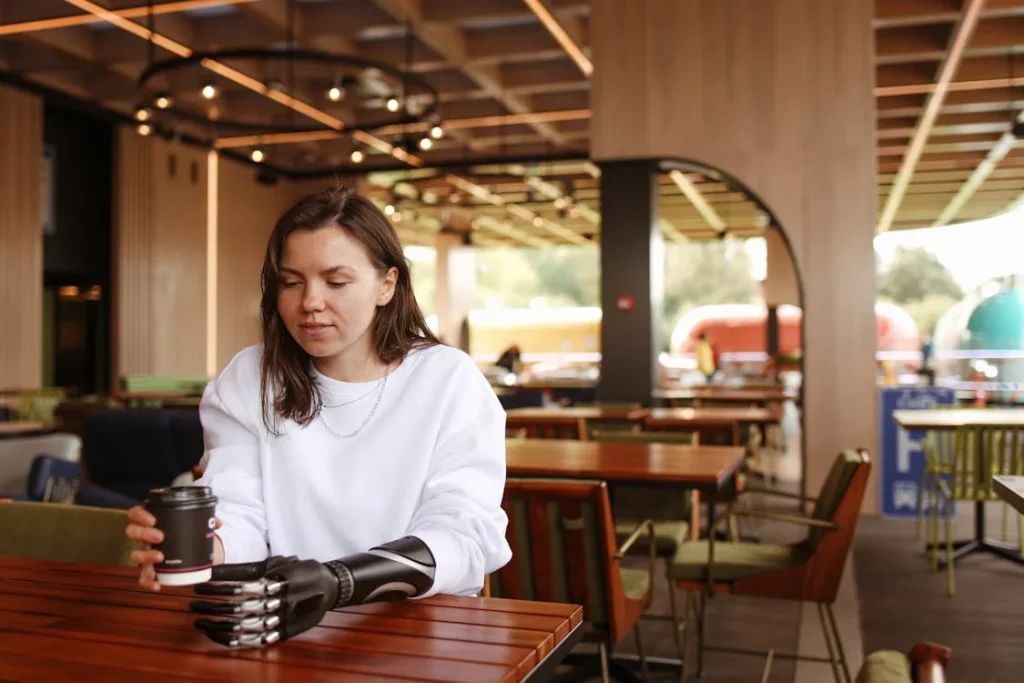
Mental Wellness Through Movement: The Psychological Impact of Gamified Rehab
Physical Recovery Is Only Half the Journey
In India, when someone experiences a major physical event—like an amputation, a stroke, a spinal injury, or even a complex fracture—the attention quickly shifts to the body. Can the person walk again? Will the limb heal? Are the stitches holding?
But beneath those visible challenges, there’s often a quieter, deeper struggle: the mind adjusting to the new reality.
Many patients experience anxiety, fear, sadness, or even a loss of identity after such events. They feel disconnected from their body. They feel isolated from their old routines. Some feel like they’ve failed their family. And in many parts of India, mental health is still seen as something shameful or private—so they don’t talk about it. They just stop trying.
This is where gamified rehab, even at its most basic level, can offer something powerful. Not just a way to move, but a reason to want to move again.
Play Lowers Emotional Barriers
When a person is told, “You need to do these five exercises today,” the task feels clinical. It reminds them of what they’ve lost. If they can’t do it perfectly, they may feel frustrated or ashamed.
But when they’re told, “Can you help this bird fly by lifting your arm?”—the same task feels lighter. It feels creative. It feels possible.
Gamified rehab taps into childlike curiosity. It doesn’t talk about “range of motion” or “repetitions.” It talks about winning, trying again, beating your last score. That shift in tone is incredibly helpful for patients dealing with emotional weight. It turns rehab into something playful. And play, even when it’s brief or simple, reduces fear and increases openness.
We’ve seen patients at Robobionics who, for weeks, avoided physical therapy because they were “tired” or “not in the mood.” But when handed a tablet and shown a simple game that involved gentle arm movement, they smiled. Not because the pain went away—but because the experience felt inviting, not demanding.
Routine and Progress Rebuild Self-Worth
Depression and anxiety after major physical trauma are often linked to one emotion: helplessness. Patients feel like their body betrayed them. They don’t see a clear path back to normal life. And because healing is slow, every day feels the same. Nothing to look forward to. Nothing to feel proud of.
Gamified rehab changes that by providing two things depression hates: structure and feedback.
The structure comes from the system’s routine—morning sessions, evening check-ins, goals to reach. The feedback comes from the software itself: small celebrations, progress bars, new levels, encouraging sounds.
These elements might seem simple, even silly. But they offer exactly what many people need to stay emotionally afloat during recovery: a sense of control and a reason to feel good about themselves.
In low-cost systems that operate in rural rehab centers across Maharashtra and Chhattisgarh, therapists have noted a sharp increase in emotional expression after gamified rehab is introduced. Patients laugh more. They talk more. They begin to ask questions about their progress. And most importantly—they come back the next day.
That’s the shift. From “Why try?” to “Let’s try again.”
Motivation Through Emotion: Healing the Mind by Engaging the Heart
Human motivation doesn’t run on logic. It runs on emotion. People are far more likely to keep doing something that feels good—even if it’s hard—than something that feels correct but cold.
Gamified rehab systems understand this at a design level. They use color, music, motion, and narrative to draw people in. They make the experience feel alive. And when a patient feels emotionally engaged—even mildly—they are more likely to push through discomfort, try new movements, or commit to their routine.
This is especially useful for young amputees or accident survivors dealing with trauma. For them, traditional therapy can feel clinical and even triggering. But game-like rehab creates a soft entry point. A way to ease back into using their body without harsh reminders of what they’ve lost.
In this way, gamified rehab acts as emotional scaffolding. It supports the healing process from within, not just through muscle movement but by quietly rebuilding courage.
Culturally Sensitive Design Can Reduce Mental Health Stigma
In India, conversations around mental health are growing—but slowly. Many older adults still resist therapy or counseling. They may not even recognize what they’re feeling as anxiety or depression. But they do understand fatigue. They do understand “not feeling like yourself.” They do understand the loss of rhythm in daily life.
Gamified rehab, when introduced with sensitivity and simplicity, becomes a non-threatening doorway into mental wellness.
It doesn’t ask, “Are you depressed?” It says, “Would you like to try this relaxing shoulder game today?” And when they do, and they feel better—even for ten minutes—the belief in recovery starts to grow.
In rural Rajasthan and Assam, Robobionics-supported programs have used voice-guided rehab tools that combine movement with calming tones, slow visuals, and daily greetings in local dialects. The result is not just physical improvement—it’s a visible lift in spirit.
Sometimes, what a patient needs most is not strength or flexibility. It’s the feeling that they’re still in control. That their body, though changed, is still theirs. That their mind, though shaken, is still steady. That healing is still possible.
Low-cost gamified rehab has the power to deliver this—not as therapy in the medical sense, but as therapy in the human sense.
Conclusion
Low-cost gamified rehab is more than just a clever idea—it’s a lifeline for millions of Indians who need therapy but can’t afford to travel, can’t pay for daily sessions, or can’t stay motivated through traditional means. Whether it’s a young man learning to use a prosthetic, an elderly woman recovering from a stroke, or a child regaining motor skills, gamified rehab brings therapy into their world—in their language, at their pace, and within their reach.
At Robobionics, we believe that recovery should never feel out of reach. By using simple technology, cultural insight, and the psychology of play, we can turn every home, school, and community center into a space for healing. And we can do it with joy, dignity, and consistency.
The future of rehab in India isn’t just digital. It’s personal, it’s inclusive, and it’s possible. All we need is the will to make it happen—together.



